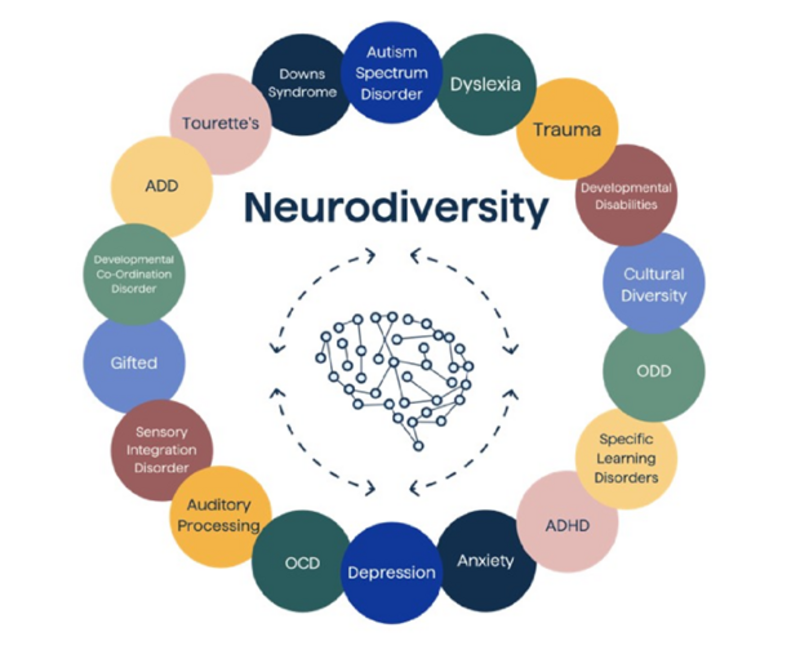
Why has there been a recent and documented rise of neurodiversity cases in the workplace? Let’s start by defining what Neurodiversity is. According to Harvard Health Publishing, the word neurodiversity refers to the diversity of all people, but it is often used in the context of autism spectrum disorder (ASD), as well as other neurological or developmental conditions such as ADHD or learning disabilities. Autism spectrum disorder (ASD) includes a broad spectrum of disorders that affects social skills, speech, movement, learning, cognition, mood and behavior. Neurodiversity describes the cognitive differences between how people think, learn and behave. While everyone's brain has similar development, no two brains function just alike. Regarding neurodiversity, since there is no single, “proper” way for a brain to function, the goal is to honor each person's unique perspectives and experiences without inserting judgment.
Neurodivergence also includes attention hyperactivity disorder (ADHD) (which is a developmental disorder that affects a person's ability to focus, control their behavior, and be still), dyscalculia (a learning disorder that affects a person's ability to understand number-based information and math)
and dysgraphia (a neurological condition in which someone has difficulty turning their thoughts into written language for their age and ability to think, despite exposure to adequate instruction and education) among others. Being neurodivergent means having a brain that functions differently from the average or “neurotypical” person, which is a term used to reference people who do not have a neurological condition that influences how they process information.
There has been a rise in the number of people diagnosed with “neurodivergence” in adulthood over the past decade. So why has there been a noticeable increase in the number of cases in the workplace as well as the general population? One of the key factors contributing to the rise in Autism and ADHD diagnoses is increased awareness and screening as well as improved diagnostic practices, including better access to healthcare. Thanks to greater access to information, mental health professionals, educators, and parents now better understand the traits associated with these neurotypes.
As society's understanding of neurodiversity is growing, more adults are being diagnosed with neurodivergent conditions. As a result, there has also been a reduced stigma associated with this, which has led more people to seek support. It's estimated that between15–20% of the world's population is neurodivergent, and nearly one fifth of adults in the United States have some form of attention or learning issue. Interestingly, it’s estimated that 45% of C-level executives, 55% of business owners, and nearly one third of senior management identify as neurodivergent.
Research also reveals that the unemployment rate for neurodiverse adults can be as high as 40%, which is about three times higher than the rate for disabled people, and nearly eight times higher than the rate for people without disabilities.
Many resources exist to support people with neurodiversity as well as to provide support for those caring for peoples who are neurodivergent. NEURODIVERSITYHUB is a great resource and provides a wide variety of information about support mechanisms for the neurodivergent community which include specific information for employers that will assist them in understanding how to work with neurodiverse individuals.
Being aware of the increase in neurodivergence in the workplace also provides an opportunity to become more understanding and empathetic. Some ways to facilitate supporting neurodivergent employees is by using clear, plain language and making the effort to check for understanding as many neurodivergent people have a hard time “reading between the lines.” Other effective ways employers can support individuals with neurodiversity is by providing accommodations, according to ADA law and section 504 of the Rehabilitation Act as well as team training to foster an inclusive environment. Finally, interviewing, hiring, onboarding and subsequent workplace integration practices will foster a welcoming environment and help introduce neurodiverse programs into the workplace.
Our guest blogger is Aaron Combe. Aaron is the Employee Relations Specialist, Division of Human Resources, with the Colorado Department of Transportation and is CDOT's Statewide Program Administrator for ADA Title 1.